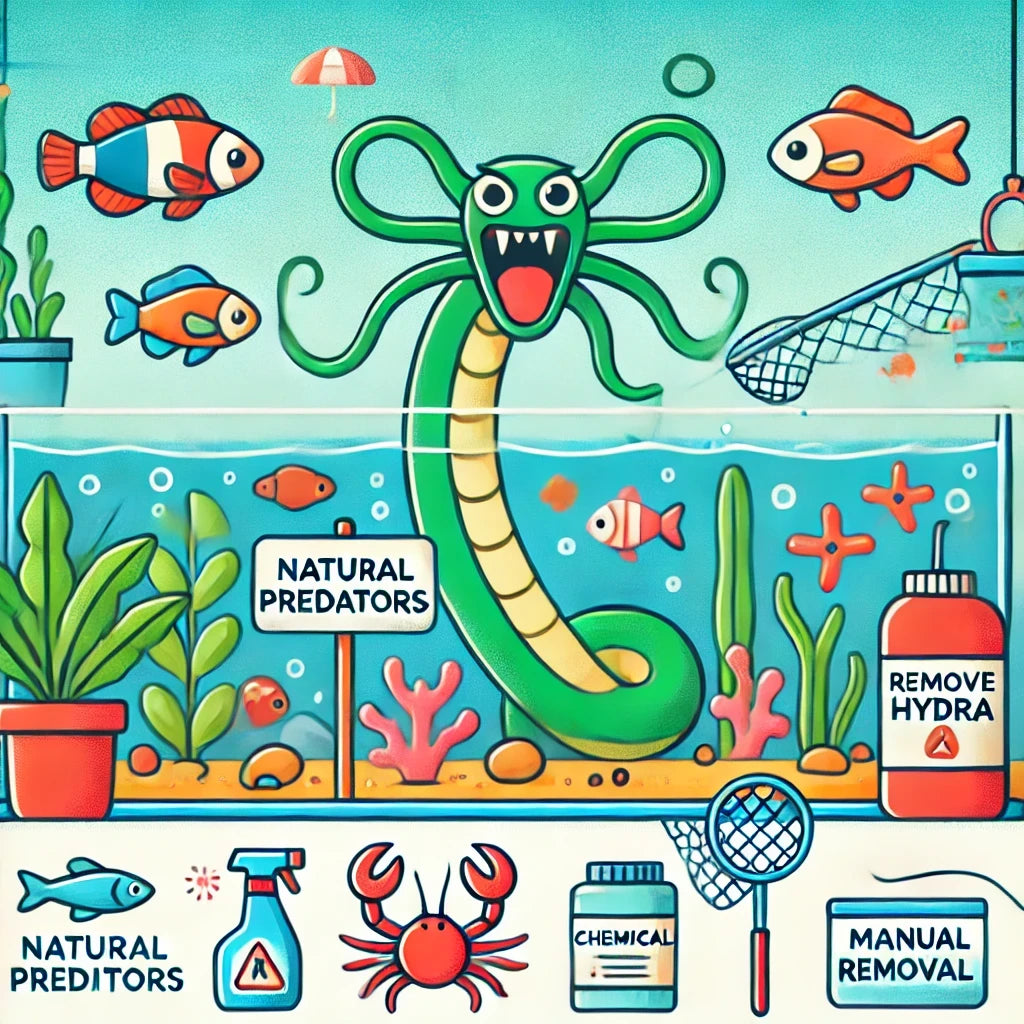Trending searches
Popular collections
Cart
$0

Hydra, a small freshwater invertebrate, can rapidly become a nuisance in your aquarium. Known for their tentacle-like appendages and ability to consume large amounts of food, Hydra can negatively impact your tank by preying on small fish, fry, and invertebrates. While they are fascinating organisms, their rapid reproduction and persistence can be problematic for a balanced aquarium ecosystem. Fortunately, there are several effective ways to control and eliminate Hydra without disrupting your aquatic environment.
Hydra are small, predatory animals that belong to the phylum Cnidaria. They have a tubular body and are often found attached to plants, rocks, or other surfaces in freshwater tanks. Hydra use their tentacles to sting and immobilize small prey, such as baby shrimp, fry, or even tiny invertebrates. If left unchecked, Hydra can multiply quickly, outcompete your tank's inhabitants for food, and potentially harm delicate species.
Hydra thrive in environments where they have little competition for food. One way to curb their population is by increasing the number of other invertebrates, such as snails or shrimp, in your tank. These creatures will compete for the same food sources as Hydra, reducing the availability of food for them and limiting their ability to reproduce.
Tip: Choose species that won't be harmed by Hydra's stinging cells. Snails and larger shrimp like Amano shrimp are good options, as they are less likely to be preyed upon.
Introducing natural predators into your tank can be a highly effective way to control Hydra populations. Certain fish, such as guppies, bettas, and some tetras, are known to consume Hydra as part of their diet. By adding compatible fish that naturally prey on Hydra, you can help keep their population in check.
Best Predator Options:
Important: Make sure any predator fish you add are compatible with the existing inhabitants of your aquarium. Always research the species' temperament and requirements before introducing them into your setup.
If you have a small Hydra infestation, manual removal can be the quickest and most direct approach. Using tweezers or a pipette, carefully pluck the Hydra from your tank's surfaces. Dispose of them outside of your aquarium to prevent them from recolonizing.
Steps for Manual Removal:
Tip: Regularly inspect your tank for new Hydra colonies, as these creatures can reproduce asexually and regenerate from small remnants.
Chemical treatments are another option for dealing with Hydra, but they should be used with caution. Hydrogen peroxide, potassium permanganate, and copper sulfate are commonly used to eradicate Hydra. However, these chemicals can harm other sensitive tank inhabitants, such as shrimp, snails, and some fish.
Common Chemical Treatments:
Warning: Always follow dosage instructions carefully and consider treating Hydra in a separate quarantine tank to minimize risk to your main aquarium's ecosystem.
If you're dealing with a persistent Hydra problem, using a physical barrier can help prevent their spread. Installing a fine mesh screen or sponge filter over your tank's water intake can stop Hydra from being transported to other areas of the aquarium. This method is especially useful in newly established tanks or aquariums with delicate species.
How It Works:
Physical barriers are a simple, non-invasive way to protect your tank from Hydra overgrowth, especially if you're introducing new plants or animals that might carry Hydra.
To prevent future Hydra outbreaks, it's essential to maintain good tank hygiene and regularly monitor water conditions. Hydra often thrive in tanks with excess organic matter or overfeeding. By controlling food waste and maintaining a clean environment, you can minimize the chances of Hydra gaining a foothold in your aquarium.
Prevention Tips:
Hydra can quickly become a nuisance in your aquarium, but with the right approach, you can effectively control and eliminate their population. By introducing natural predators, manually removing Hydra, or using chemical treatments carefully, you can restore balance to your tank. Taking preventive steps, such as maintaining cleanliness and monitoring your tank's inhabitants, will help keep Hydra at bay, ensuring a thriving and beautiful aquatic ecosystem.
With a little patience and the right strategies, your aquarium can be free from Hydra, allowing your fish and plants to flourish.
!